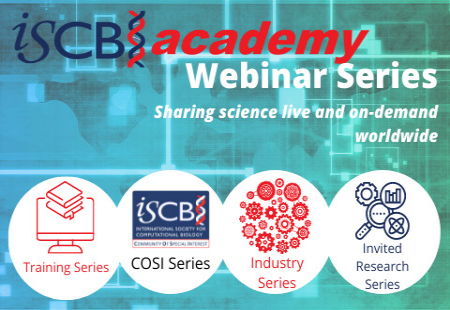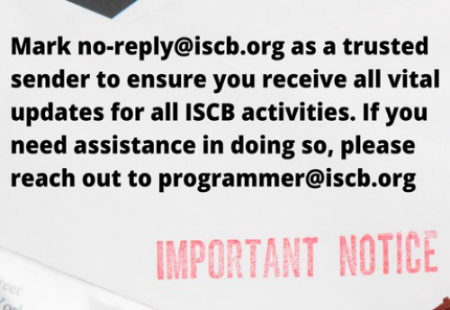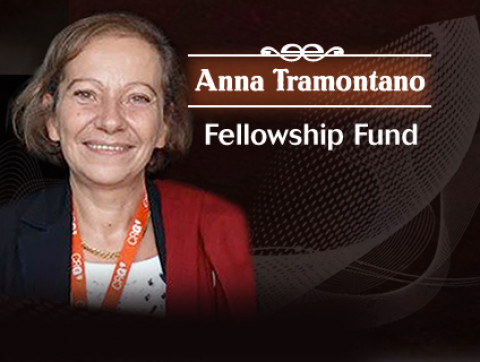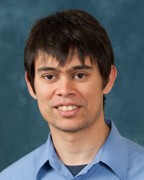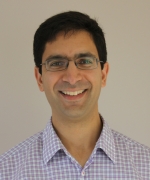ISMB/ECCB 2013 SIGs & Satellite Meetings
ISMB/ECCB 2013 will hold a number of one, two and three-day specialized meetings in computational biology. These meetings consist of Special Interest Group Meetings (SIGs) and Satellite Meetings (SMs) and will be held prior to the main conference. A SIG meeting is a one- or two-day focused workshop. It provides a broad and/or deep perspective on developments in a field of research, and is intended as a way to address a topic more extensively than can be done in the main conference. A Satellite Meeting is similar to a SIG meeting but is more of a mini-conference and is generally two or three days in duration. Satellite meetings are held in conjunction with ISMB/ECCB.
Program information and registration details are noted below. To inquire about the possibility of forming a new SIG for ISMB 2014 or beyond, please address your inquiry to This email address is being protected from spambots. You need JavaScript enabled to view it.
One-Day SIGs (Pre-conference) - Friday, July 19, 2013
Integrative RNA Biology - SIG (formerly Alternative Splicing)
NetBio SIG
Mass Spectrometry SIG (MS-SIG)
SNP-SIG
One-Day SIG (Pre-conference) - Saturday, July 20, 2013
BioLINK SIG
Bio-Ontologies
Regulatory Genomics Special Interest Group - RegGenSIG
Automated Function Prediction
Two-Day SIG - Friday, July 19 and Saturday, July 20, 2013
BOSC:14th Annual Bioinformatics Open Source Conference
MLSB: Machine Learning in Systems Biology
HitSEQ: High Throughput Sequencing Algorithms & Applications
Satellite Meetings
3Dsig:Structural Bioinformatics & Computational Biophysics
Date: July 19 - 20, 2013
Start Time: 8:30 a.m - 6:00 p.m.
Room: Hall 14.2
3Dsig, a Satellite Meeting of the ISMB/ECCB conference, focused on structural bioinformatics and computational biophysics and has become the largest meeting in this growing field.
In addition to keynotes our diverse program will include talks selected from submitted abstracts, our traditional after dinner speaker, daily discussion on important topics to this community, laptop software demos and poster sessions. Simply put, 3DSIG is the most comprehensive conference in the field and should not be missed by anyone using macromolecular structure to computationally unravel the mysteries of living systems.
Over the years, 3DSig has brought the leaders of the field of Structural Bioinformatics and Computational Biophysics in an ideal environment for personal contacts and discussions. The list of past keynotes includes: Ivet Bahar, Nir Ben-Tal, Phil Bourne, James U. Bowie, Steven Brenner, Wah Chiu, Cyrus Chothia, Charlotte Deane, Arne Elofsson, Dmitri Frishman, Nick Grishin, Kevin Karplus, Amy E. Keating, Tanja Kortemme, Gunnar von Heijne, Barry Honig, David Jones, Thomas Lengauer, Michael Levitt, George I. Makhatadze, John Moult, Klaus Mueller, Ruth Nussinov, Christine Orengo, Burkhard Rost, Rob Russell, Andrej Sali, Jeffrey Saven, Tamar Schlick, Torsten Schwede, Luis Serrano, Brian Schoichet, Kim A. Sharp, Manfred Sippl, Michael Sternberg, Joel Sussman, Devarajan Thirumalai, Janet Thornton, Anna Tramontano, Ron Unger, Alfonso Valencia, Sandor Vajda, Rebecca Wade, Haim Wolfson.
Abstract submission deadline: April 30, 2013
Relevant topics include:
- Application of structure to systems biology
- Structure-based drug discovery including polypharmacology and network pharmacology.
- Structure representation, classification and prediction.
- Macromolecular assemblies.
- Structural genomics.
- 3D databases and data mining.
- Molecular visualization.
- Relevant methods of structure determination, particularly hybrid methods.
- Structure-based function prediction.
- Evolution Studied through Structures.
- Docking, analysis, prediction and simulation of biomolecular interactions such as protein-protein, protein-ligand and protein-nucleic acid.
- Prediction and analysis of protein domains.
- Membrane protein structure analysis and prediction.
- Protein dynamics and disorder
- The structural basis of immunology.
We look forward to meeting you at 3Dsig
Program Chair
Philip E. Bourne
University of California San Diego
This email address is being protected from spambots. You need JavaScript enabled to view it.
Rafael Najmanovich
Université de Sherbrooke, Canada
This email address is being protected from spambots. You need JavaScript enabled to view it.
Ilan Samish
The Weizmann Institute
This email address is being protected from spambots. You need JavaScript enabled to view it.
top
CAMDA 2013 – Critical Assessment of Massive Data Analysis
Room: 43
Currently, the Big Data explosion is the grand challenge in life sciences. Analysing large data sets is emerging to one of the scientific key techniques in the post genomic era. Still the data analysis bottleneck prevents new biotechnologies from providing new medical and biological insights in a larger scale. This trend towards the need for analysing massive data sets is further accelerated by novel high throughput sequencing technologies and the increasing size of biomedical studies. CAMDA focuses on the analysis of the massive data sets in life sciences. It provides new approaches and solutions to the big data problem, presents new techniques in the field of bioinformatics, data analysis, and statistics for handling and processing large data sets.
CAMDA focuses on the specific challenges and opportunities in the analysis of the massive data sets that are increasingly produced in several fields of the life sciences. The conference offers researchers from the computer sciences, statistics, molecular biology, and other fields a unique opportunity to benefit from a critical comparative evaluation of the latest approaches in the analysis of life science's "Big Data".
This year, CAMDA's scientific committee set up two challenges
- the prediction of drug compatibility from an extremely large toxicogenomic data set, and
- the decoding of genomes from the Korean Personal Genome Project.
We cordially invite you to attend this year's CAMDA. See our Call for Papers, including the annual CAMDA challenge!
Submit at: https://www.easychair.org/account/signin.cgi?conf=camda2013
Confirmed keynotes:
Atul Butte, Stanford University School of Medicine, CA, USA
Nikolaus Rajewsky, Max-Delbrück-Center for Molecular Medicine, Berlin, Germany
Jun Wang, Beijing Genomics Institute (BGI), Shenzhen, China
Key dates:
| Extended Abstract Proposals Due |
20 May 2013 |
| Abstract Deadline for Poster Submission |
25 May 2013 |
| Notification of Accepted Contributions |
30 May 2013 |
| Early Registration Closes |
1 Jun 2013 |
| CAMDA 2013 Conference |
19–20 Jul 2013 |
| ISMB/ECCB 2013 Conference |
21–23 Jul 2013 |
| Full Paper Submission |
25 Aug 2013 |
Organizers:
Joaquin Dopazo, CIPF, Spain, This email address is being protected from spambots. You need JavaScript enabled to view it.
Sepp Hochreiter, JKU Linz, Austria, This email address is being protected from spambots. You need JavaScript enabled to view it.
David Kreil, Boku University, Austria, This email address is being protected from spambots. You need JavaScript enabled to view it.
Simon Lin, Marshfield Clinic, U.S.A., This email address is being protected from spambots. You need JavaScript enabled to view it.
Contact: This email address is being protected from spambots. You need JavaScript enabled to view it.
top
SIG Meetings
Integrative RNA Biology - SIG (Formerly Alternative Splicing-SIG)
The meeting for Integrative RNA Biology is focused on deriving new RNA Biology using a combination of computational and experimental techniques. The meeting is designed to bring computational experts attending ISMB together with world experts in different aspects of RNA processing.
Many computational challenges are involved in the study of RNA, ranging from quantifying gene isoforms and secondary structure modelling, to detecting miRNA regulatory networks and deciphering splicing regulation.
RNA processing involves complex and highly regulated mechanisms that affect many biological processes, such as cell type differentiation, sex-determination, or apoptosis. One important component of RNA processing is alternative splicing (AS), by which pre-RNA can be spliced differently to produce different mRNA isoforms. Other components involved in RNA processing that have gained much research attention include alternative polyadenylation (APA) and the expression of many non-coding RNAs, such as micro-RNAs (miRNAs), small-interfering RNAs (siRNAs), PIWI-interacting RNAs (piRNAs), or long nuclear RNAs.
While many of these phenomena have been studied separately, accumulating evidence now points towards the interplay between transcription, RNA processing, RNA turnover and the effects non-coding RNAs exert on these machineries. This interplay leads to a new, interconnected system view of gene expression regulation. In parallel, the advent of high-throughput methodologies enabled researchers to obtain genome-wide measurements of the make-up and the regulation of the transcriptome within a well-defined biological context. However, the complexity of these data also poses interpretation challenges, particularly when considering that the snapshot of the transcriptome that high-throughput methodologies permit us to obtain are the result of many integrated regulation processes.
In this meeting we aim to bring computational experts attending ISMB together with world experts in the fields of RNA processing and non-coding RNAs to discuss recent advances in RNA biology and related computational and experimental methodology. We hope the meeting will foster new interactions and help bridge the gap between researchers in the different fields.
Organizers:
Klemens Hertel , University of California, Irvine, United States, This email address is being protected from spambots. You need JavaScript enabled to view it.
Yoseph Barash , University of Pennsylvania, United States This email address is being protected from spambots. You need JavaScript enabled to view it.
Eduardo Eyras, Pompeu Fabra University & ICREA, Spain, This email address is being protected from spambots. You need JavaScript enabled to view it.
top
Automated Function Prediction
URL: http://biofunctionprediction.org
Date: July 20, 2013
Start time: 8:30 a.m - 6:00 p.m.
Room: Hall 4
The availability of high-throughput experimental platforms for sequencing, mass-spectrometry proteomics, and structural genomics has resulted in a wealth of biological data. However, extracting meaningful information from these data is becoming increasingly difficult as both the number and the diversity of discovered sequences are increasing. This increase means that often-used annotation methods, such as homology transfer, are annotating less data. While the accuracy of homology transfer has been limited in the first place, this fact combined with the range of degrees of quality of experimental data suggests the need for developing advanced methods. In addition, there is a need for standardized annotation that could be incorporated into function annotation on a large scale. Finally, there is a need to assess the quality of the function prediction methods as well as usefulness of deployable tools. We almost certainly know the sequence, perhaps also the structure, and even some interaction partners of the target for next generation antibiotics or cancer treatment. We just did not recognize that target for what it is: it is currently annotated as “unknown function".
The mission of the Automated Function Prediction Special Interest Group (AFP-SIG) is to bring together computational and experimental biologists who are dealing with the important problem of gene and gene product functional annotation, to share ideas and create collaborations. As part of our goal to stimulate development of novel protein function prediction methods and their evaluation, we are conducting the Critical Assessment of protein Function Annotation or CAFA experiment.
About the CAFA experiment
The problem: There are far too many proteins in the databases for which the sequence and various other information are known, but the function is not. A major challenge in the field of bioinformatics is to predict the function of a protein from its sequence, structure, or other data. At the same time, how can we judge how well these function prediction algorithms are performing and whether they are useful for experimental scientists?
Our approach: The Critical Assessment of protein Function Annotation (CAFA) is a challenge designed to provide a large-scale assessment of computational methods dedicated to predicting protein function. The first CAFA challenge took place between September 2010 and January 2011 with an evaluation meeting held at AFP SIG during ISMB 2011 in Vienna. The experiment and the associated meeting were highly successful – resulting in 15 peer-reviewed publications. The next CAFA experiment will be announced at AFP SIG 2013. Among the new challenges for CAFA 2 are: the prediction of subcellular localization and the prediction of human phenotypes.
Important Dates
| March 1, 2013 |
Call for talk and poster abstracts opens |
| April 20, 2013 |
Deadline for submitting abstracts |
| May 7, 2013 |
Notification of accepted talk and poster abstracts emailed to authors |
| July 20, 2013 |
Autormated Function prediction SIG at ISMB 2013 |
Follow developments on http://biofunctionprediction.org
Organizers:
Iddo Friedberg, Miami University; This email address is being protected from spambots. You need JavaScript enabled to view it.
Predrag Radivojac, Indiana University; This email address is being protected from spambots. You need JavaScript enabled to view it.
Sean Mooney, The Buck Institute for Research on Aging; This email address is being protected from spambots. You need JavaScript enabled to view it.
Contact: This email address is being protected from spambots. You need JavaScript enabled to view it.
top
BioLINK: Linking Literature, Information and Knowledge for Biology Roles for text mining in biomedical knowledge discovery and translational medicine
With the increasing availability of text data related to biology and medicine in the scientific literature, database annotations, the electronic health record, clinical trials data, and health information online, exciting opportunities arise to provide access to pertinent biomedical information and to advance biomedical knowledge. An evolving research direction is the integration of information from diverse data sources, including textual data, to support deeper understanding of biological systems, the genomic basis of disease, and genotype-phenotype relationships. This year's BioLINK SIG Workshop will focus on text-based applications which link between biological and clinical information. We will build on the topic of the well-attended 2011 special session on data integration, but shift the focus towards the use of text mining in applications that aim to further biological or medical understanding.
Key Dates (updated April 17)
April 17, 2013 Short and Long paper -- Abstract uploaded to submission site
April 21, 2013 Short and Long paper -- Full paper due on submission site
May 17, 2013 Notifications for short and full papers
May 20, 2013 Poster abstracts due
May 24, 2013 Final paper versions due
Keynote speaker:
Lars Juhls Jensen, Professor, Group Leader in Disease Systems Biology NNF Center for Protein Research, Faculty of Health Sciences, University of Copenhagen, Denmark.
Organizers:
- Christian Blaschke, Spanish Institute of Bioinformatics, Spain;
- Lynette Hirschman, MITRE Corporation, USA; This email address is being protected from spambots. You need JavaScript enabled to view it.
- Hagit Shatkay, Dept. of Computer and Information Sciences, Center for Bioinformatics and Computational Biology, University of Delaware, USA
- Alfonso Valencia, Spanish National Cancer Research Centre, Spain;
- Karin Verspoor, National Information and Communication Technology Australia (NICTA), Australia; This email address is being protected from spambots. You need JavaScript enabled to view it.
Contact: This email address is being protected from spambots. You need JavaScript enabled to view it.
top
URL:www.bio-ontologies.org.uk
Date: July 20, 2013
Start time: 8:30 a.m - 6:00 p.m.
Room: Hall 5
The Bio-Ontologies SIG provides a forum for discussion of the latest and most innovative research in the appplication of ontologies and more generally the organisation, presentation and dissemination of knowledge in biomedicine and the life sciences. Bio-Ontologies has existed as a SIG at ISMB for 15 years, making it one of the longest running.
Key Dates
| April 12th, 2013 |
Submissions Due |
| May 10th, 2013 |
Notifications |
| May 17th, 2013 |
Final Version Due |
Papers are invited in areas, such as the applications of bio-ontologies, newly developed bio-ontologies, and the use of ontologies in data sharing standards. Example topics include (but not limited to):
Applications of ontologies in bioinformatics
- Hypothesis Testing Platforms
- Use of Ontologies in Data Standards
- "Flash updates" on Newly Developed or Existing Bio-Ontologies
- Bio-Curation Platforms
- Automated Annotation Pipelines
- Efforts using ontologies for Bio-NLP or Information Retrieval
- Semantic Web Enabled Applications
Advances in development of biomedical ontologies
- Collaborative Ontology Authoring and Peer-Review Mechanisms
- Automated Ontology Learning
- Mapping between Ontologies
- Research in Ontology Evaluation
- Using games for Ontology review and evaluation
Organizers:
Nigam Shah, Stanford University, United States, This email address is being protected from spambots. You need JavaScript enabled to view it.
Susanna-Assunta Sansone, University of Oxford, United Kingdom, This email address is being protected from spambots. You need JavaScript enabled to view it.
Michel Dumontier, Carleton University, Canada, This email address is being protected from spambots. You need JavaScript enabled to view it.
Larisa Soldatova, Brunel University, United Kingdom,This email address is being protected from spambots. You need JavaScript enabled to view it.
Contact: This email address is being protected from spambots. You need JavaScript enabled to view it.
top
Regulatory Genomics Special Interest Group - RegGenSIG
URL: http://light.ece.ohio.edu/~reggen/2013/
Date: July 20, 2013
Start time: 8:30 a.m - 6:00 p.m.
Room: Hall 10
Regulatory genomics involves the study of the genomic ‘control system,’ which determines how, when and where to activate the ‘blueprint’ encoded in the genome. Regulatory genomics is the topic of much research activity worldwide. Since computational methods are important in the study of gene regulation, the RegGenSIG meeting focuses on bioinformatics for regulatory genomics. An important goal of the meeting is to foster a collaborative community wherein scientists convene to solve difficult research problems in all areas of computational regulatory genomics.
RegGenSIG will include presentations and posters that cover the broad spectrum of topics important to regulatory genomics research. The goal is to bring together experts in experimental methods and computational methods to consider sequence-based reconstruction of regulatory networks and prediction of gene expression. Topics to be addressed in the SIG include the following:
- inference of gene regulatory networks;
- utilization of information pertaining to epigenetics, chromatin structure, and histone modifications;
- determination of the roles of regulatory RNAs;
- prediction of transcriptional regulation from RNA-seq data and ChIP-seq data;
- pattern discovery in sequences; and
- sequence based modeling of gene expression.
ABSTRACT SUBMISSION:
To make an oral presentation at RegGenSIG, extended abstracts (2-3 pages) should be submitted by April 27, 2013. Based on the submitted abstracts, each author will be invited to make either an oral presentation or a poster presentation. Authors will be notified by May 11, 2013.
For poster presentations, authors should submit a 250 word abstract no later than May 18, 2013. Author notification will occur no later than May 25, 2013.
KEY DATES
|
April 27, 2013
|
Due date for extended abstracts (2-3 pages) for oral presentations
|
|
May 11, 2013
|
Author notification for oral presentations
|
|
May 18, 2013
|
Due date for short abstracts (250 words) for poster presentations
|
|
May 25, 2013
|
Author notification for poster presentations
|
|
June 1, 2013
|
Early registration cut-off date
|
|
July 20, 2013
|
RegGenSIG meeting
|
SIG CHAIRS
- Finn Drablos, Norwegian University of Science and Technology, Norway
- Eileen Furlong, EMBL, Germany
- Saurabh Sinha, University of Illinois, USA
- Lonnie Welch, Ohio University, USA
SIG ORGANIZING COMMITTEE
- Tim Bailey, University of Queensland, Australia
- Harmen Bussemaker, Columbia University
- Andrea Califano, Columbia University
- Julio Collado-Vides, National Autonomous University of Mexico
- Laura Elnitski, National Human Genome Research Institute, USA
- Ana Teresa Freitas, Technical University of Lisbon, Portugal
- Roderic Guigo, Centre for Genomic Regulation, Spain
- Alexander Hartemink, Duke University
- Manolis Kellis, MIT, USA (pending)
- Kathleen Marchal, Professor University of Ghent and K. U. Leuven, Belgium
- William Noble, University of Washington (tentative)
- Isidore Rigoutsos, Thomas Jefferson University, USA
- Sophie Schbath, Institut National de la Recherché Agronomique, France
- Gustavo Stolovitzky, IBM
- Gary Stormo, Washington University, USA
- Kai Tan, University of Iowa, USA
- Andrei Thomas-Tikhonenko, University of Pennsylvania
- Esko Ukkonen, University of Helsinki, Finland
- Martin Vingron, Max Planck Institute for Molecular Genetics, Germany
- Weixiong Zhang, Washington University, USA
- Igor Zwir, University of Granada
RegGenSIG is an activity of the ISCB Special Interest Group for Regulatory Systems Genomics, (http://www.iscb.org/iscb-sigs-regsys), a community of shared interest that has multiple activities and interactions throughout the year, rather than solely meeting during the ISMB conference. An important goal of the SIG is to foster a topically-focused collaborative community wherein scientists communicate with one another on research problems and/or opportunities in the area of computational biology as it pertains to regulatory and systems genomics. The SIG holds two meetings per year, (1) RegGenSIGand (2) The ISCB RECOMB Conference on Regulatory and Systems Genomics and DREAM Challenges (http://www.iscb.org/recomb-regsysgen2013).
top
BOSC: The 14th Annual Bioinformatics Open Source Conference
URL: http://www.open-bio.org/wiki/BOSC_2013
Date: Friday, July 19 - Saturday, July 20
Start time: 8:30 a.m - 6:00 p.m.
Room: Hall 9
The Bioinformatics Open Source Conference (BOSC) is sponsored by the Open Bioinformatics Foundation (O|B|F), a non-profit group dedicated to promoting the practice and philosophy of open source software development within the biological research community. BOSC covers the wide range of open source bioinformatics software packages that have been successfully developed and adopted by the community, and encompasses the growing movement of Open Science, with its focus on transparency, reproducibility, and data provenance. We welcome submissions relating to all aspects of open source bioinformatics software and open science, including new computational methods, reusable software components, visualization, interoperability, and other approaches that help to advance research in the biomolecular sciences. Two full days of talks, posters, panel discussions, and informal discussion groups will enable BOSC attendees to interact with other developers and share ideas and code, as well as learning about some of the latest developments in the field of open source bioinformatics.
Key dates:
| March 12, 2103 |
Call for abstracts opens |
| April 12, 2013 |
Abstracts due |
| July 19-20, 2013 |
BOSC 2013 |
Session topics:
- Cloud and Parallel Computing
- Genome-scale Data Management
- Software Interoperability
- Open Science and Reproducible Research
- Visualization
- Bioinformatics Open Source Project Updates
Organizers:
- Nomi L. Harris (Lawrence Berkeley National Laboratory, USA)
- Jan Aerts (Katholieke Universiteit Leuven, Belgium)
- Brad Chapman (Harvard School of Public Health, USA)
- Peter Cock (James Hutton Institute, UK)
- Christopher Fields (National Center for Supercomputing Applications, USA)
- Jeremy Goecks (Emory University, USA)
- Hans-Rudolf Hotz (Friedrich Miescher Institute for Biomedical Research, Switzerland)
- Hilmar Lapp (National Evolutionary Synthesis Center, USA)
top
URL: http://nrnb.org/netbiosig
Date: Friday July 19, 2013
Start time: 8:30 a.m - 6:00 p.m.
Room: Hall 10
Biological networks provide a context for integrating and analyzing massive amounts of diverse kinds of measurement data, such as gene expression data from microarray experiments, protein abundance data from mass spectrometry, and genetic data from association studies. Network theory provides powerful analysis techniques that can be used to develop insights into large amounts of data. Our use of networks in biology has changed from purely representational and didactic purposes to more analytic and hypothesis formulation purposes. This shift has resulted, in part, from the confluence of advances in computation, informatics, and high throughput techniques in systems biology.
For interactions amongst thousands of genes, proteins, and metabolites, these networks can be quite large and complex. Network analysis tools can manage this complexity, for example by identifying clusters of activity – regions of high interconnectivity that are also characterized by high gene expression levels. The most highly connected molecules or hubs of such regions may be control points for the network; modulating their activity may influence the activity of many other molecules. With knowledge of the structure and behavior of biological networks, biologists can identify intervention points for drugs and therapeutics, limit adverse side-effects of treatments, and infer predisposition to disease.
We are soliciting abstracts that cover new developments in network biology. The SIG will focus on two major areas: (1) the development of network-related tools and resources, and (2) the application of network analysis and visualization in the study of biology, synthetic biology and medicine. The SIG will provide a unique meeting space for tool developers and users in the field of network biology. Through these complementary lenses, the SIG will bring into focus the current state of the field, its future promise and how to get there.
Confirmed Invited Speakers:
- Natasa Przulj - Computational Systems Biology - Imperial College London, UK
- Esti Yeger-Lotem - Network Biology of Human Disease - Ben-Gurion University of the Negev, Israel
- Michael Schroeder - Drug Repositioning with Networks - Biotechnology Center, TU Desden, Germany
- Benno Schwikowski - Network Inference, CYNI - Pasteur Institute, France
- Stefan Schuster - In silico detection of hitherto unknown pathways in metabolic networks - FSU Jena, Germany
Organizers:
Alexander Pico, Gladstone Institutes, United States,This email address is being protected from spambots. You need JavaScript enabled to view it.
Scooter Morris, University of California, San Francisco, United States, This email address is being protected from spambots. You need JavaScript enabled to view it.
Allan Kuchinsky, Agilent Technologies, United States, This email address is being protected from spambots. You need JavaScript enabled to view it.
Gary Bader, University of Toronto, Canada, This email address is being protected from spambots. You need JavaScript enabled to view it.
Mario Albrecht, Max Planck Institut, Germany, This email address is being protected from spambots. You need JavaScript enabled to view it.
Natasa Przulj, Imperial College London, United Kingdom, This email address is being protected from spambots. You need JavaScript enabled to view it.
Esti Yeger Lotem, National Institute for Biotechnology in the Negev, Israel, This email address is being protected from spambots. You need JavaScript enabled to view it.
top
Machine Learning in Systems Biology (MLSB)
URL: http://www.mlsb.cc
Date: July 19-20, 2013
Start time: 8:30 a.m - 6:00 p.m.
Room Location: Hall 8
Molecular biology and all the biomedical sciences are undergoing a true revolution as a result of the emergence and growing impact of a series of new disciplines/tools sharing the "-omics" suffix in their name. These include in particular genomics, transcriptomics, proteomics and metabolomics, devoted respectively to the examination of the entire systems of genes, transcripts, proteins and metabolites present in a given cell or tissue type.
The availability of these new, highly effective tools for biological exploration is dramatically changing the way one performs research in at least two respects. First, the amount of available experimental data is not a limiting factor any more; on the contrary, there is a plethora of it. Given the research question, the challenge has shifted towards identifying the relevant pieces of information and making sense out of it (a "data mining" issue). Second, rather than focus on components in isolation, we can now try to understand how biological systems behave as a result of the integration and interaction between the individual components that one can now monitor simultaneously (so called "systems biology").
Taking advantage of this wealth of "omics" information has become a condition sine qua non for whoever ambitions to remain competitive in molecular biology and in the biomedical sciences in general. Machine learning naturally appears as one of the main drivers of progress in this context, where most of the targets of interest deal with complex structured objects: sequences, 2D and 3D structures or interaction networks. At the same time bioinformatics and systems biology have already induced significant new developments of general interest in machine learning, for example in the context of learning with structured data, graph inference, semi-supervised learning, system identification, and novel combinations of optimization and learning algorithms.
MLSB13, the Seventh International Workshop on Machine Learning in Systems Biology, is a satellite of the ISMB 2013 conference. It aims to contribute to the cross-fertilization between the research in machine learning methods and their applications to systems biology by bringing together method developers and experimentalists. We are solliciting submissions bringing forward methods for discovering complex structures (e.g. interaction networks, molecule structures) and methods supporting genome-wide data analysis
Please see the workshop website http://www.mlsb.cc for more details.
Organizers :
Uwe Ohler, Berlin Institute for Molecular Systems Biology / Max Delbrueck Center, Germany, This email address is being protected from spambots. You need JavaScript enabled to view it.
Jean-Philippe Vert, Institut Curie and Mines ParisTech, France, This email address is being protected from spambots. You need JavaScript enabled to view it.
top
Mass Spectrometry SIG (MS-SIG)
URL: http://igenomed2.stanford.edu/Proteomics2013_mssig/
Date: Friday July 19, 2013
Start time: 8:30 a.m. - 6:00 p.m.
Room: 44
We invite you to participate at our 2nd Mass Spectrometry Special Interest Group (MS-SIG) on July 19, 2013, in Berlin. At MS-SIG 2013, we will discuss the following topics:
1) Bioinformatics challenges in high-throughput proteomics,
2) Omics data integration, and
3) Proteomics application in biology and medicine.
Confirmed invited speakers:
Jürgen Cox (Max Planck Institute of Biochemistry)
Oliver Kohlbacher (Eberhard Karls University)
Juri Rappsilber (University of Edinburgh)
Julia Chamot-Rooke (Laboratoire des Mécanismes Réactionnels)
Henning Hermjakob (European Bioinformatics Institute)
Olga Vitek (Purdue University)
Mikhail Savitski (Cellzome)
Lars Malmstrom (ETH Zurich)
Lukas Käll (the Royal
Institute of Technology, Sweden)
Our meeting will contain three portions: oral presentation, panel discussion, and poster presentation. We invite abstract submissions on a wide range of topics about mass spectrometry data analysis and Omics data integration. The poster session will provide an opportunity to present your work in an informal setting. We will also have a limited number of talks selected from abstracts slots in the program.
Key Dates:
1st abstract deadline: 03/15/13 (Friday)
1st notification date: 03/22/13 (Friday)
2nd abstract deadline: 05/13/13 (Monday)
2nd notification date: 05/20/13 (Monday)
Organizers:
Wenzhong Xiao, Massachusetts General Hospital and Harvard Medical School
Soyoung Ryu, Stanford University
Samuel Payne, Pacific Northwest National Laboratory
Christoph Schaab, Max Planck Institute of Biochemistry
top
HiTSEQ 2013: High Throughput Sequencing Algorithms & Applications
URL: http://hitseq.org
Date: Friday July 19-20, 2013
Start time: 8:30 AM - 6:00 PM
Room: Hall 7
HiTSeq is an ISMB/ECCB 2013 special interest group satellite conference devoted to the latest advances in computational techniques for the analysis of high-throughput sequencing (HTS) data. It provides a forum for in depth presentations of novel algorithms, analysis methods, and applications in multiple areas of biology that HTS is transforming. HiTSeq seeks full papers submissions to be peer-reviewed. If accepted, these contributions will be presented at the conference and published on a companion volume edited by the Bioinformatics journal. Short abstract submissions will be also accepted for either brief oral presentations or posters.
HiTSeq 2013 will also host three keynotes by leaders in the field, and two topical sessions on Human microbiome analysis, and cancer genomics. Keynote speakers for 2013 include Prof. George Weinstock, Associate Director of The Genome Institute at Washington University, and Dr. Richard Durbin, Joint Head of Human Genetics at the Wellcome Trust Sanger Institute.
Topics:
- Detecting Genome variation
- Transcriptome Analysis
- Epigenomics and chromatin regulation
- Clinical genomics
- Cancer genomics
- Metagenomics
- Human Microbiome
- Analysis of 3rd and 4th generation sequencing platforms data
We are soliciting high-quality papers on any of the topics of interest that will go through rigorous peer-review. All manuscripts should be submitted via the Bioinformatics online submission system at http://mc.manuscriptcentral.com/bioinformatics. During submission please specify HiTSeq as one of the keywords, and include a cover letter stating that the manuscript be considered for the HiTSeq conference.
Simultaneously HiTSeq also allows for the submission of abstracts, which will be evaluated independently for the conference proceedings. Abstracts for consideration should be one page and submitted by e-mail to This email address is being protected from spambots. You need JavaScript enabled to view it.. The final decisions whether each paper or abstract is presented as a talk or a poster will be made and communicated to authors by May 31.
Key Dates
- March 17 – Full paper submissions
- March 25 – Paper author notifications
- May 13 – Abstract submissions
- May 31 – Abstract presentation decisions
- June 7 – Early registration ends
- July 19-20 – Conference program
Organizers:
Francisco M. De La Vega, D.Sc.
Real Time Genomics, Inc. San Bruno, CA, USA
Francisco {at} realtimegenomics.com
Dirk J. Evers, Ph.D.
New York Genome Center. New York, NY, USA
Djevers {at} nygenome.org
Gunnar Rätsch, Ph.D.
Memorial Sloan-Kettering Cancer Center. New York, NY, USA
Ratschg {at} mskcc.org
Sohrab Shah, Ph.D.
BC Cancer Agency. Vancouver BC, Canada
Sshah {at} bccrc.ca
For more information, please visit the SIG website at http://hitseq.org
top
SNP-SIG
URL: http://snpsig.biofold.org/
Date: Friday July 19, 2013
Start time: 8:30 AM - 6:00 PM
Room: Hall 4
The primary goal of the SNP-SIG is to outline and discuss the recent advances in the methodology for the annotation and analysis of genomic variation data.
SNPs are generally very interesting in the context of their phenotypic manifestations. The discrepancy between the significant availability of SNP data and the current lack of its interpretation requires the development of methods for the annotation/prediction of the SNP impact. Direct-to-consumer (DTC) companies, such as 23andMe and Navigenics, offer DNA tests to provide insight on the genetic traits. In the near future the analysis of genetic variation will be a key factor for the understanding of the information encoded in the genome
The SNP-SIG provides a forum for the organization of a research network facilitating the exchange of ideas and the establishment of new collaborations bringing together varying expertise. It will thus support the unprecedented collaborative effort to manage the complexity of the analysis and evaluation of genetic variation.
The SIG will be divided into two sessions - "SNPs as markers: evolution, populations, GWAS" and "SNPs as effectors: function, structure, and regulation". For detailed information please see the SIG website.
We are interested in attracting submissions describing original work in all the fields of genomic variation research including, but not limited to:
- Databases, data mining algorithms and visualization tools for SNP analysis.
- Methods for predicting regulatory/structural/functional impacts of SNPs
- Personal Genomics, GWAS studies and SNP prioritization
- Population genomics and phylogenetic analysis
Deadlines:
Poster Abstract submissions: March 22nd, 2013 URL: http://snp-sig.biofold.org/pa.html
Presentation Proposal submissions: March 22nd, 2013 URL: https://www.easychair.org/conferences/?conf=snpsigismbeccb2013
Organizers:
Yana Bromberg, Rutgers University, United States, This email address is being protected from spambots. You need JavaScript enabled to view it.
Emidio Capriotti, University of Alabama at Birmingham, United States, This email address is being protected from spambots. You need JavaScript enabled to view it.
Key Dates
- March 22 – Poster abstract submission
- March 22 – Presentation proposal submission
- March 29 – Poster author notification
- April 19 – Presentation proposal author notification
- June 7 – Early registration end
- July 19 – Conference program

